In the not-so-distant past, “enterprise automation” was a term applied to larger organizations with lots of complex steps, workflows, processes, and stakeholders. However, as all companies become increasingly more intricate, adopting enterprise automation makes sense for businesses of all shapes and sizes.
What is enterprise automation?
So, what is enterprise automation? Simply put, it’s applying automation technology to eliminate repetitive tasks, complicated workflows, and business processes to save money and increase efficiency.
With a focus on reducing interruptions and task-switching, enterprise automation decreases operational costs and detangles complex processes using an AI-powered platform.
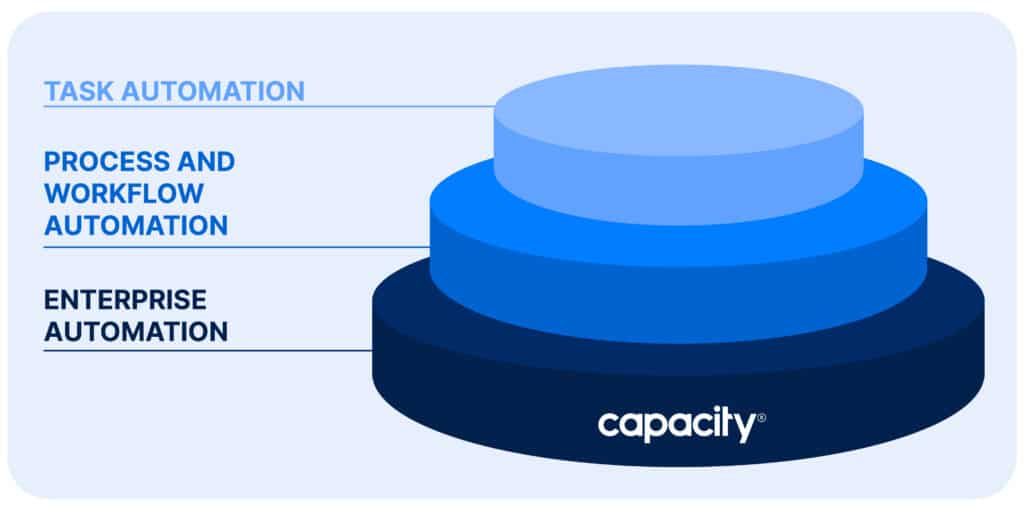
So…what does this fancy graphic mean?
Task Automation is a piece of the enterprise automation puzzle but not the entire puzzle. Companies specializing in task automation use low-code or no-code software to automate tasks, like sending alerts to Slack.
Workflow & Process Automation takes Task Automation to the next level, using advanced AI technology like RPA, which automates repetitive tasks humans would otherwise have to complete, like logging in to a system to pull information without human intervention.
Enterprise Automation is a combination of all of the above. Implementing an Enterprise Automation platform is like giving your entire organization a giant process hug.

Automate Your Work
Capacity’s enterprise AI chatbot can help:
- Answer FAQs anytime, anywhere
- Find relevant documents within seconds
- Give surveys and collect feedback
Why do enterprises need workflow automation?
Enterprise-level businesses can benefit from automating repetitive processes, allowing teams to spend more time on strategic, human-centered work. The rise of enterprise workflow automation technology is expected to grow exponentially over the next several years. The focus on streamlining business processes through automation is forecasted to increase from $4.8 billion in 2018 to more than $26 billion in 2025.
Time is such a valuable asset. Workers spend around 60% of their time engaged in “work about work.” What does this mean? “Work about work: might look like responding to hundreds of identical emails and message pings, searching endlessly for documents and data, or completing duplicate tasks. As organizations add more employees and processes grow, businesses must respond.
Enterprise automation is the response.
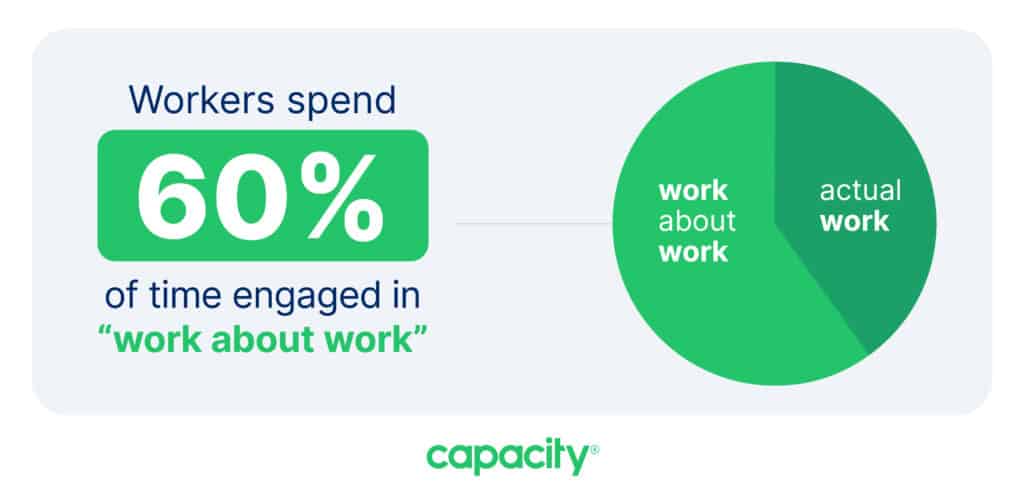
4 examples of automation in an enterprise business
Automate employee onboarding
There are so many steps to onboarding an employee. In a small business, onboarding might feel easy, but manual tasks can add up without enterprise automation, bogging down lean HR teams as businesses grow and scale. A mind-boggling 50% of organizations still rely on manual processes and paperwork. As organizations look forward, enterprise automation is no longer a nice-to-have but imperative for success.
Automating onboarding tasks for enterprise businesses helps boost employee productivity and increase retention. New employees can actually “hit the ground running” faster, saving organizations time and money.
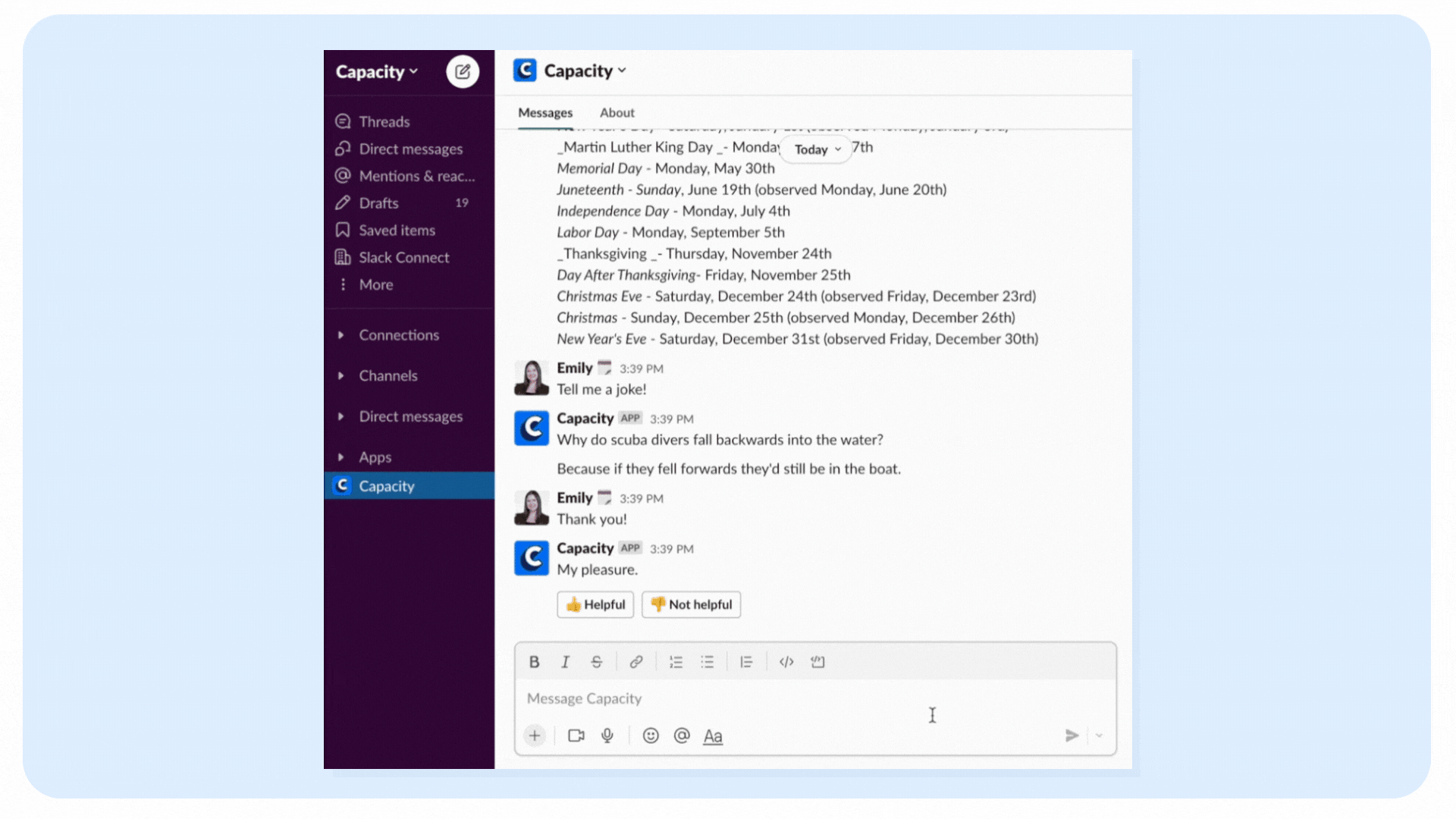
Prevent helpdesk tickets
Support teams have minimal time and resources to spend working on tickets. With nearly half of organizations spending $100 or more per hour on customer support, it’s no surprise some enterprise businesses are falling behind.
Enterprise automation solutions crush helpdesk tickets and emails before they ever land in an inbox or hit a live chat. According to Mckinsey, 45% of tasks can be automated by adapting automation technology. For example, if a customer asks about company policies, enterprise automation tools reply, answering their question before a support ticket ever reaches a human.
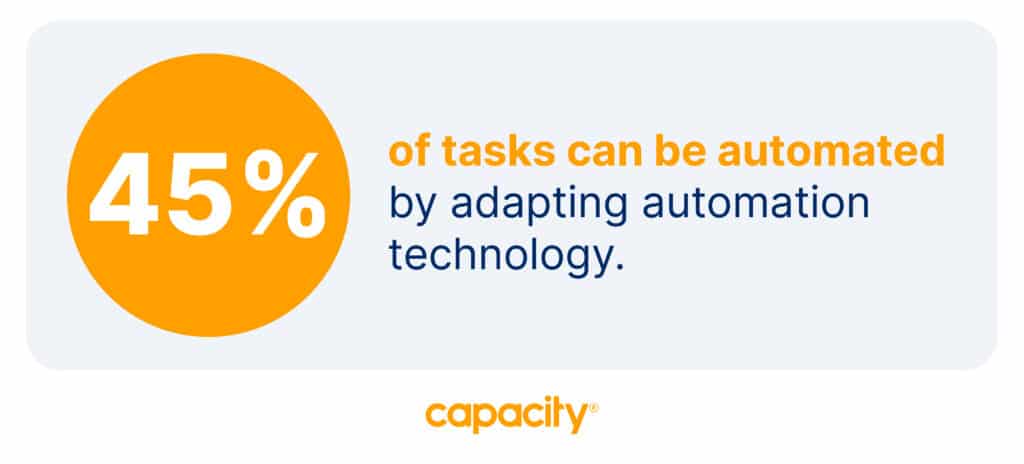
Find documents and data
Enterprise Automation also means waving goodbye to digging for documents and data, providing information within seconds, not hours. A study from CRMInside uncovered an astonishing stat: Enterprise professionals take around 18 minutes to find the required info to perform a single task. That means for every 40-hour work week, a single employee might spend about 5 hours every week task-switching, trying to gather information.
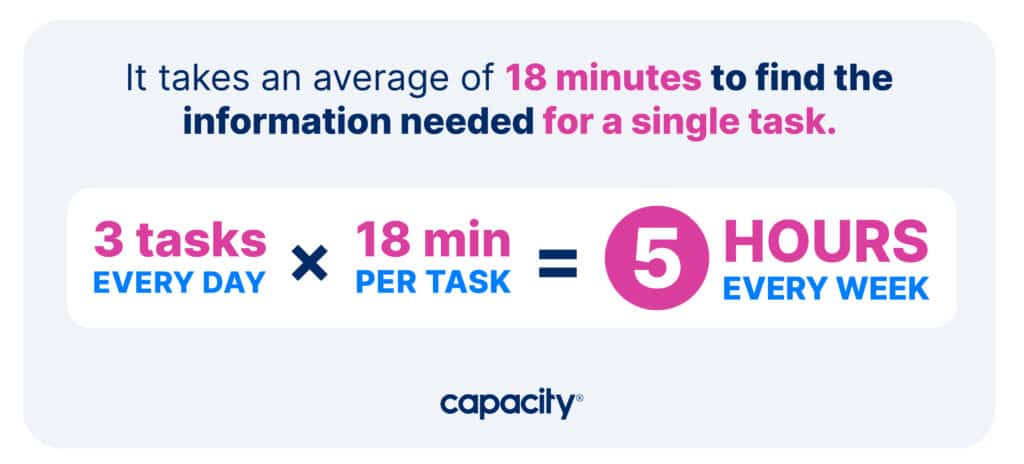
Instead of searching through outdated intranets, disparate databases, and physical docs, enterprise automation pulls everything together in one place.
Simplify lead generation
Chatbot technology is an integral piece of enterprise automation. Using chatbots as part of a unified enterprise platform means getting qualified leads in the pipe easier and faster than ever, instantly initiating your qualifying process. Chatbots with AI automation technology route these leads immediately to the right place, whether it’s a shared email inbox, Slack, or folder.
Top 3 enterprise automation solutions
Finding the right enterprise automation platform can be daunting. Consider your organization’s goals while searching for a solution to add to your tech stack. Check out our picks:
Capacity
Capacity is the only enterprise automation platform that doesn’t simply focus on AI, low-code/no-code, or task automation—it solves big, hairy business problems.

Crush tickets and emails with the automated helpdesk, add all of your organization’s information to the knowledge base and give your team instant access to tacit wisdom whenever and wherever they are.
With custom integrations, Capacity connects to your company’s software and tech stack, automating support for internal teams and external customers through a cohesive helpdesk, knowledge base, AI-powered chatbots, and workflow automation.
Automation Anywhere
Automation Anywhere is a software company that develops robotic process automation software. While they offer some similar features, Automation Anywhere focuses on RPA technology.
Zapier
Zapier focuses on task-based automation, including low-code “automations,” like sending a message to a Slack channel. They lack an RPA solution that would truly put them in the Enterprise Automation category, but with a light, no-code platform, they do a nice job with smaller tasks.
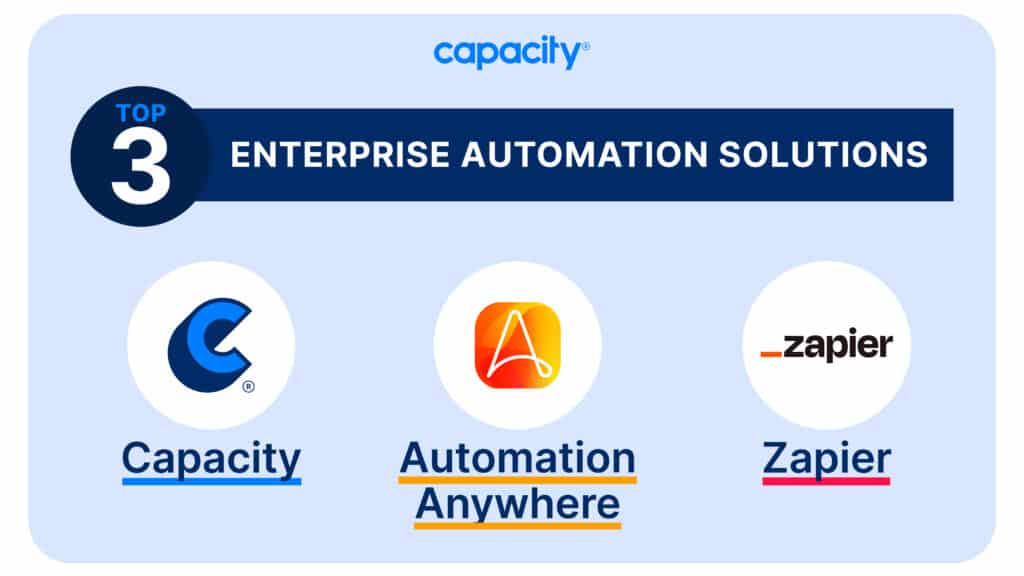
5 Steps to automate enterprise workflows
Automating enterprise tasks and workflows can feel a little overwhelming at first. Here are five simple steps to get started:
Identify tasks that can be automated
Think about all of the manual processes in your organization. Chances are, there are too many to count. However, some of the most common are:
• Sending and receiving emails
• Responding to customer questions
• Training employees
• Looking up client information
• Finding quick answers to questions
Sort through the list and decide which tasks take priority and which can be automated.
Set achievable goals
What is your org looking to accomplish with enterprise automation? There are several factors to keep in mind while implementing enterprise automation solutions, including:
• Low employee productivity and morale
• Disorganized workflows
• Questions and tickets sitting in the queue for hours or days
• High employee turnover
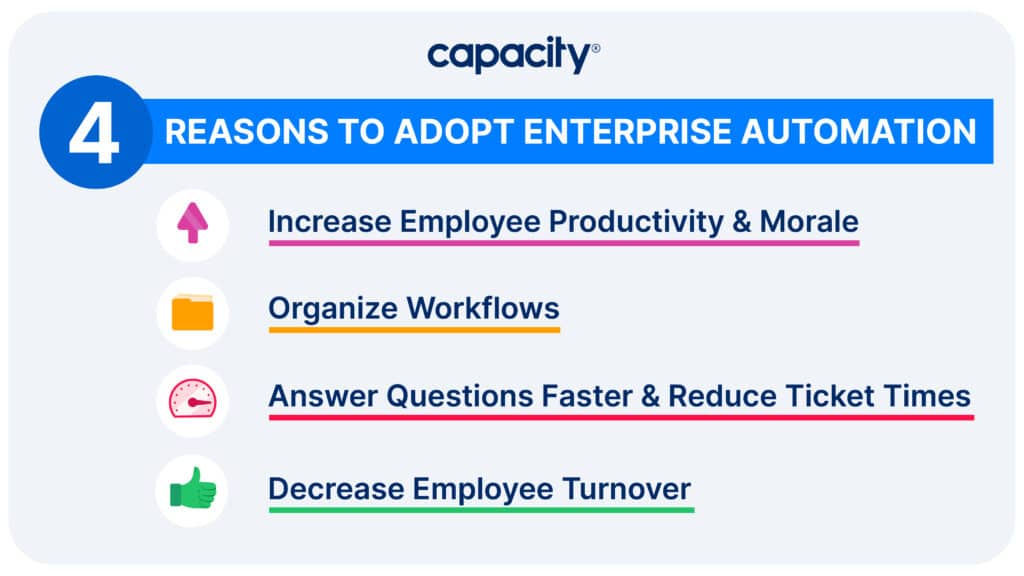
Organize tacit knowledge
What about all the info locked inside your colleagues’ minds that no one else knows? Using a knowledge base available all day and night gives customers and employees instant, accurate answers, even on weekends or holidays.
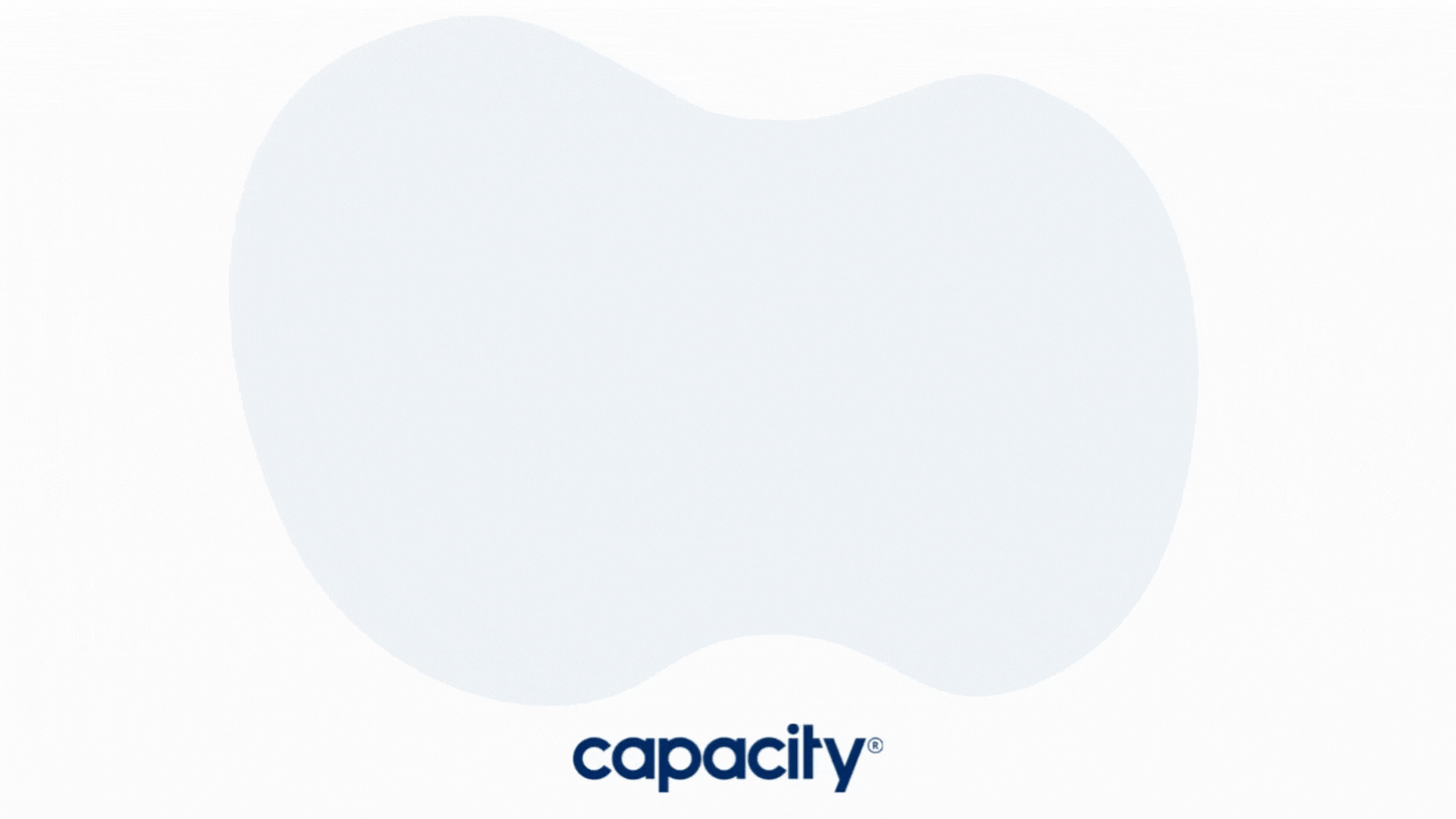
Invest in a modern chatbot
One of the main components of enterprise automation is an AI-powered chatbot. While some businesses have standard chatbots embedded on their website, we’re talking about modern, advanced chatbot technology.
Think of chatbots that use conversational AI as an extension of your team. Chatbots deflect and prevent tier 0 and tier 1 questions from hitting support teams, freeing them to focus on more strategic work. Using machine learning technology, the bot gets smarter, staying up-to-date as it learns.
Additionally, AI-powered chatbots can live inside your most used apps, such as Microsoft Teams or Slack, giving teams instant access to FAQs, client information, and more.
Determine Your Implementation Plan
New technology always comes with a learning curve. A crucial part of bringing enterprise automation into your org means getting team buy-in and coordinating proper training. After gaining alignment around enterprise automation, the next step is formalizing an implementation plan. That will look different in every organization, but it begins with listing all the ways you want to streamline your business, then growing from there. Take it from NMB’s President Jodi Hall:
Meet Capacity: Your all-in-one enterprise automation platform
Imagine eliminating over 90% of FAQs and preventing tickets and emails from hitting your support team’s inbox. With Capacity, it’s possible.
Capacity is here to meet you where you are. Whether your business needs an AI-powered chatbot, a cohesive helpdesk, an improved knowledge base, or a ticket destroyer, we’ve got you.





